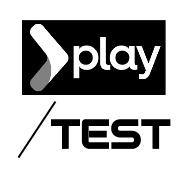Event: Two Truths Focus Group, 19 April 2018
In preparation for Two Truths: Galway Theatre Festival, we hosted a Focus Group at which participants made art out of politics.
They reviewed over 70 statements made by sitting Irish politicians or political parties, attempting to identify the affective responses of their bodies. Each picked two statements toward which they responded positively (we called these Truths) and one to which they responded negatively (we called these Lies). After a bit more meditation, the participants used oil pastels, wax crayons, ink markers and acrylic paints to create a Body Map. These Body Maps materialise participants’ embodied reactions, and will serve as the jumping-off point for Two Truths.
 As Brian Massumi notes, affect is autonomous. It is the deeply-felt resonance of the body’s nervous system. It works on levels we sometimes lose track of, and it is hard to articulate. Affect as Gilles Deleuze expresses it is the virtual on the point of becoming actual; a virtual that is real, that has effect in the world. This project aims to explore the affects sensed by participants in relation to politics. In the focus group, affect was made into art.
As Brian Massumi notes, affect is autonomous. It is the deeply-felt resonance of the body’s nervous system. It works on levels we sometimes lose track of, and it is hard to articulate. Affect as Gilles Deleuze expresses it is the virtual on the point of becoming actual; a virtual that is real, that has effect in the world. This project aims to explore the affects sensed by participants in relation to politics. In the focus group, affect was made into art.

This is a real challenge, as participants were asked to react not to objects, or images, or actual people in the room (all of which carry affective resonances without the linguistic separation between originator and receiver), but to statements designed and coded for specific results. They translated the linguistic objects of politicians and political parties into resonances felt by the body. And some participants felt them very clearly.
Some were surprised at which statements provoked a response. Some said that the experience of making art out of these strong feelings was cathartic, or validating in some way. Some statements evoked memory, or hope, or longing, or other mixes of feeling that are a hallmark of affective response – things we can’t describe.
Of course, these Body Maps are not a direct translation. They are art, made in response to the statements. They are images; they have an existence independent of the artist’s body and of the politician whose statement evoked that body’s reaction. But in this they reflect the ephemeral nature of affect as well as that of performance.

Come along to Two Truths on 5, 6, or 7 May at 2pm to see all of these works of art and use them to pick the Five Truths that will govern Ireland for the next ten years.
Tickets: €14 / €12 / €8 at www.galwaytheatrefestival.com.


